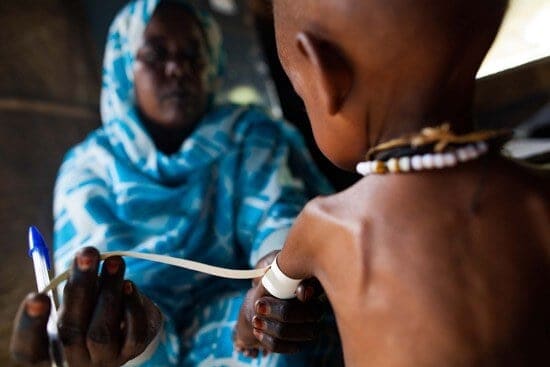Experts have long maintained that the damage children suffer if malnourished during gestation and in the first two years of life—commonly referred to as the 1,000-day window of opportunity—is irreversible and cannot be offset by interventions later in childhood.
But a new study coauthored by a BU School of Public Health researcher calls that assertion into question. The study, published online in the American Journal of Clinical Nutrition, looks at the long-term impact of chronic undernutrition, called stunting, which refers to a child who is short for his age.
The researchers found that children who were stunted at one year of age were often behind in school at age eight and scored lower on cognitive tests than their counterparts who were not stunted at age one. But children who experienced “catch-up” growth—stunted at one year of age, but recovered by age eight—were more likely to be in age-appropriate classes at age eight and to have higher scores on standard tests of cognition when compared to children who remained relatively short.
The researchers concluded that improvements in growth among children who were stunted at a young age might have significant benefits for schooling and performance on tests of cognition.
Study coauthor Kirk Dearden, an SPH associate professor of international health and a researcher with the BU Center for Global Health & Development, says the findings indicate that interventions that improve nutritional status and offer early childhood stimulation—even after the first two years of life—may help to counter the effects of early stunting.
“We’re saying, ‘Prioritize children’s nutrition in the first 1,000 days, but don’t give up after that,’” says Dearden, who is the principal investigator of National Institutes of Health–funded research at SPH that examines nutrition, schooling, and cognition. “There’s potential for children to catch up in growth, learning, and cognition. Just because infants aren’t doing well in the first year or so doesn’t mean it’s over.”
The large-scale study examined the relationship between growth recovery and cognitive abilities among 8,000 children in Ethiopia, India, Peru, and Vietnam enrolled in the Young Lives study, which researches child well-being in the developing world. Dearden’s work is designed to evaluate connections among postinfancy nutritional status, physical growth, school enrollment, and cognitive achievements in mathematics, reading, and vocabulary.
Worldwide, 19,000 children under the age of five die every day, and malnutrition is a contributing factor in about 5,500 of those deaths. Stunting is particularly problematic in Sub-Saharan Africa and South Asia. About 38 percent of all children in both regions are stunted.
Because malnutrition is a key factor in stunting, Dearden says, the study findings reinforce the need to prevent “nutritional insults” in early life, while also emphasizing the importance of promoting child growth beyond the first two years.
Dearden says that while good nutrition in infancy is critical, interventions to improve nutrition of preschool and primary school–aged children also merit serious attention. Diet, hygiene, access to clean water, and sanitation all factor into nutrition.
“Under the assumption that infants are breast-feeding, it’s critical to make sure that children get healthy foods—meats, chicken, and eggs—as soon as exclusive breastfeeding ends, at about six months of age,” Dearden says.
Also important is guarding against chronic or recurrent infections, sometimes in combination with intestinal parasites, which also can contribute to stunting.
“Height is a manifestation of both nutrition and sickness over time,” Dearden says, explaining that genetic differences in height generally do not materialize until puberty. The study shows that “the window of opportunity for intervention may not be as limited as it appeared,” in terms of a child’s age.
Dearden has conducted previous research on malnutrition, with an emphasis on identifying the impact of interventions on nutritional health. Programs he has evaluated include social marketing, breast-feeding support groups, and peer mentoring, among others. Those findings are important in determining which interventions are most effective in reducing malnutrition among children.
Dearden has just returned from a two-year assignment in Nepal, where he directed a large-scale nutrition intervention program.
Adapted from a news release issued by Brigham Young University



